Idea by
Stefano Boccardo
Gruppo Informale
Call for ideas 2016
The City belongs to Those Who use It
The City belongs to Those Who use It
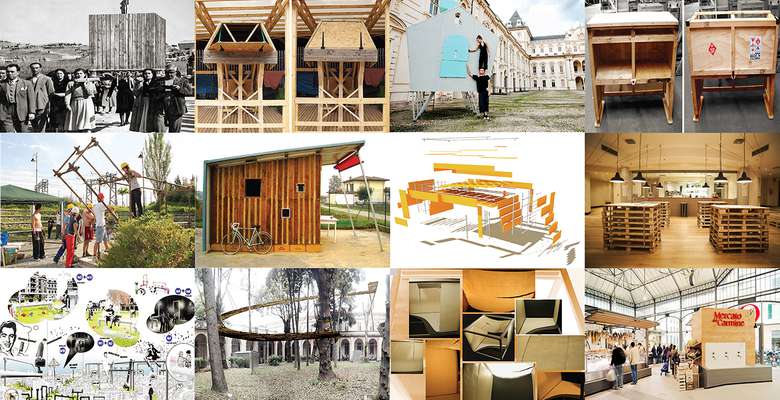
Men in history always tended to congregate with their own kind, creating societies, cities.
Cities can be considered the “natural” environment of our species. Society superstructures slowly distanced citizens by the creation of their own space, generating abandoned spaces, neglect or inability to act in their own surroundings.
Architecture should not create new objects and needs, but respond to existing ones through its tools, creating visions rather than products.
Architect could creates tools for citizens, even through direct action: microarchitectures and installations that create an individual architecture vision, changing the view of the space, teaching self-construction and opensource tools.
With a self-determinated architecture, liberalizing the citizens'right of interact with habitats (avoiding accumulation and speculation as the proposal title says) we could have a regeneration of abandoned territories (cities or rural areas) and more space caring by more involved people.

MERCATO DEL CARMINE, 2014. A neighbour organic market in Genova (IT), inside a former iron and steel structure, The market mixes stalls with restaurant and pubblic space. the construction materials are chosen for their local origin as well as products that are sold in the market.
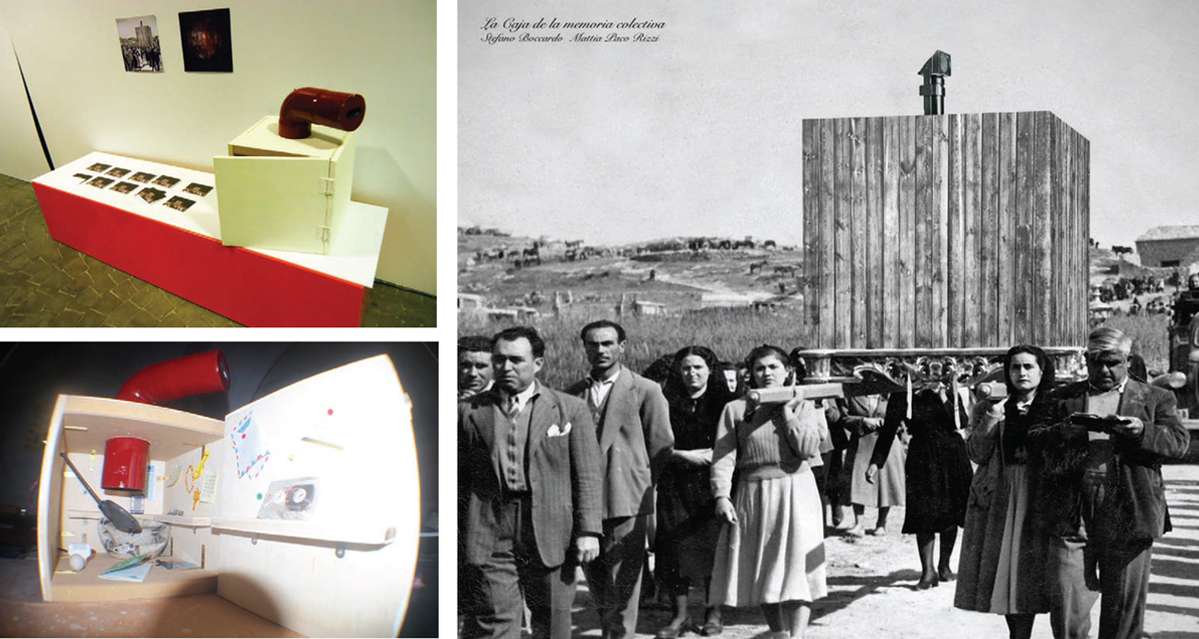
CAJA DE LA MEMORIA COLECTIVA, 2013. A laic homage to the collective memory, it has been designed for a small town in Mexico and presented in Rome. People of the nieghborhood are invited to fill the box with common objects that represent individual stories. Once the Caja is closed it can be observed by outside through a periscope. Like a votive chapel (quite common in Italy and Mexico) these objects start to interact with themselfes, mixing collective memory and religious tradition.
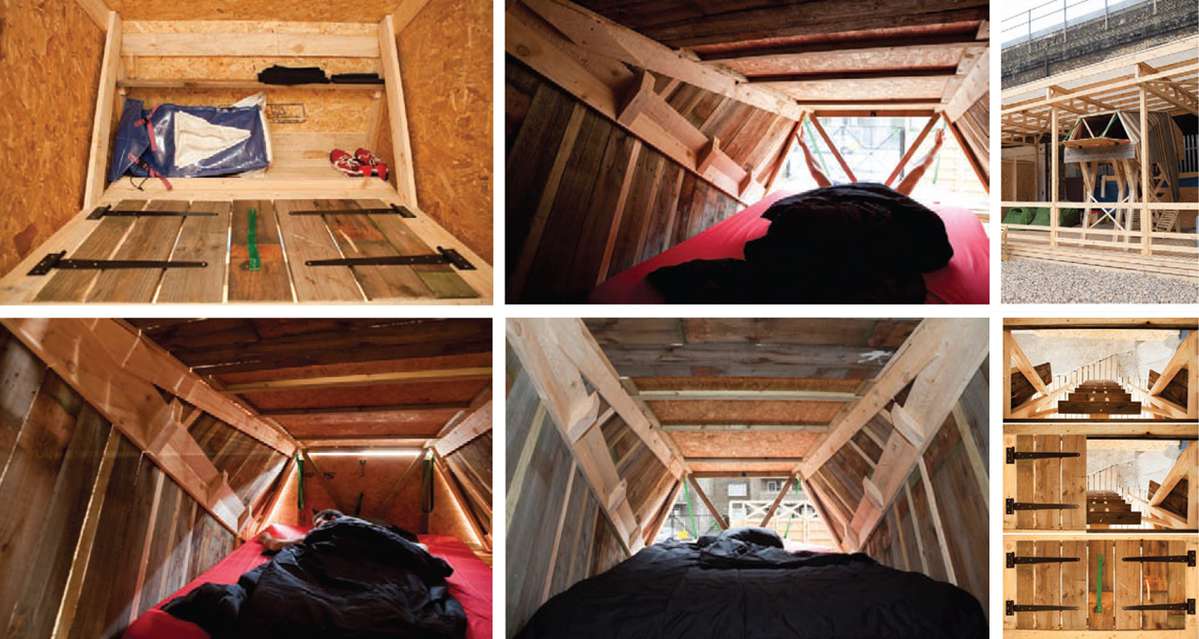
CARAPACE, 2012. - Temporary Artists Guest House. Realized in four days by three people, living directly on the construction site. The work is part of the Exyzt (FR) project: Publich House, in Southwark, London.
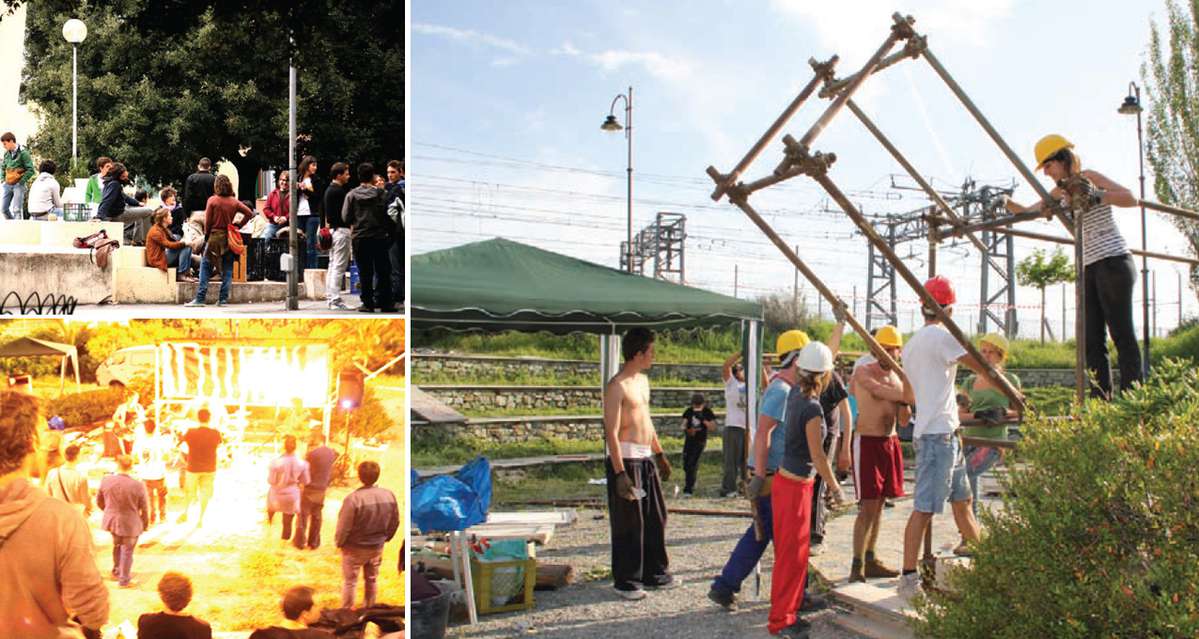
FATTISPAZIO, 2012 - A three days event in abandoned park in Genova (IT). A big Zebra has been built working with adolescents by the neighborhoods, learning how to interact with public spaces and create their own habitat. The temporary structure had the double function of a parkour training structure and a screen for open air projections.

MARIE VON BLANCHE, 2011. Marie Von Blanche is a legendary woman that lived between Alsace and Lorrain in the 19th century. De to the political changes that occoured in that area she had to move a loro, carrying all her stuff with her. The dismountable house plays with architecture archetypes, it rememper a children house based on 9 alluminium feet. It travelled a lot, throught Italy and Spain.
The City belongs to Those Who use It
The City belongs to Those Who use It

Men in history always tended to congregate with their own kind, creating societies, cities.
Cities can be considered the “natural” environment of our species. Society superstructures slowly distanced citizens by the creation of their own space, generating abandoned spaces, neglect or inability to act in their own surroundings.
Architecture should not create new objects and needs, but respond to existing ones through its tools, creating visions rather than products.
Architect could creates tools for citizens, even through direct action: microarchitectures and installations that create an individual architecture vision, changing the view of the space, teaching self-construction and opensource tools.
With a self-determinated architecture, liberalizing the citizens'right of interact with habitats (avoiding accumulation and speculation as the proposal title says) we could have a regeneration of abandoned territories (cities or rural areas) and more space caring by more involved people.
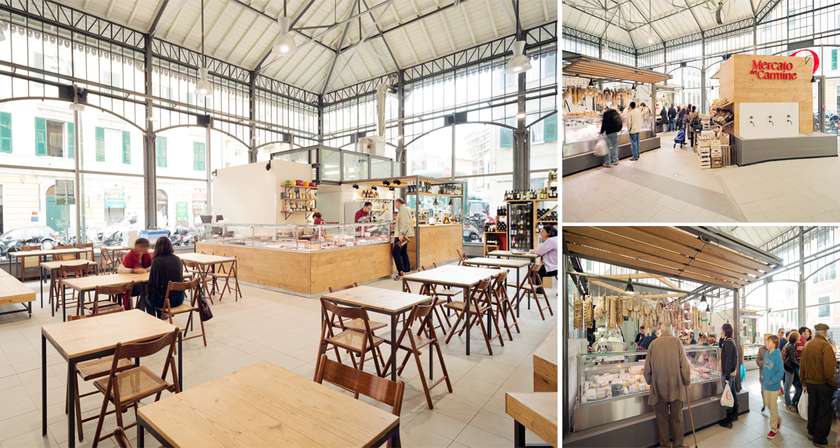
MERCATO DEL CARMINE, 2014. A neighbour organic market in Genova (IT), inside a former iron and steel structure, The market mixes stalls with restaurant and pubblic space. the construction materials are chosen for their local origin as well as products that are sold in the market.
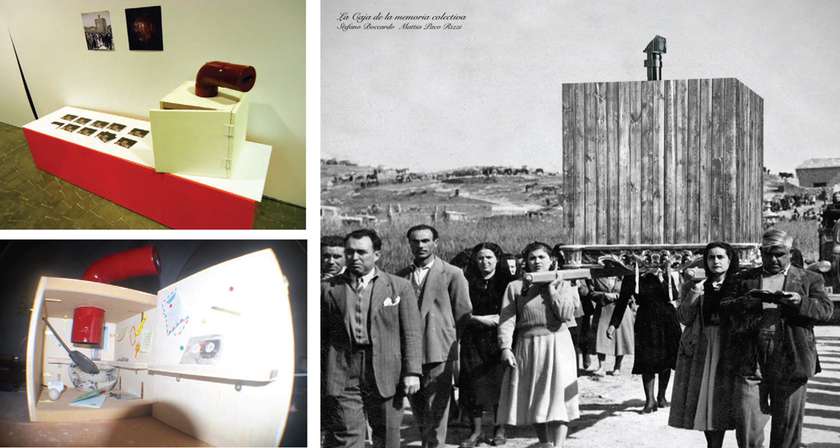
CAJA DE LA MEMORIA COLECTIVA, 2013. A laic homage to the collective memory, it has been designed for a small town in Mexico and presented in Rome. People of the nieghborhood are invited to fill the box with common objects that represent individual stories. Once the Caja is closed it can be observed by outside through a periscope. Like a votive chapel (quite common in Italy and Mexico) these objects start to interact with themselfes, mixing collective memory and religious tradition.

CARAPACE, 2012. - Temporary Artists Guest House. Realized in four days by three people, living directly on the construction site. The work is part of the Exyzt (FR) project: Publich House, in Southwark, London.
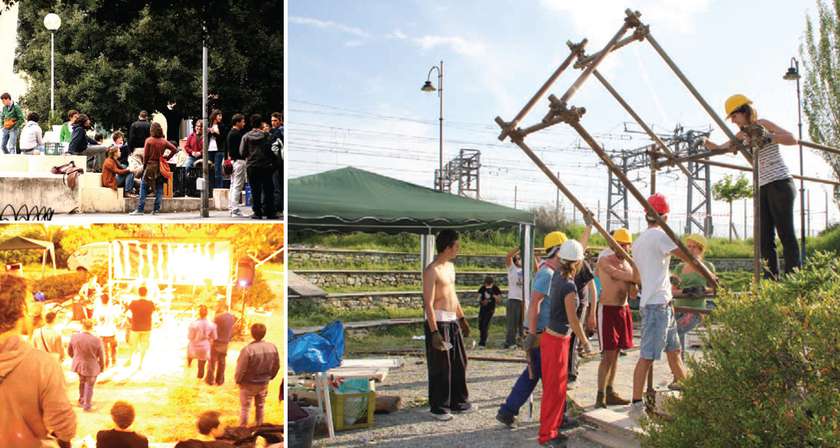
FATTISPAZIO, 2012 - A three days event in abandoned park in Genova (IT). A big Zebra has been built working with adolescents by the neighborhoods, learning how to interact with public spaces and create their own habitat. The temporary structure had the double function of a parkour training structure and a screen for open air projections.
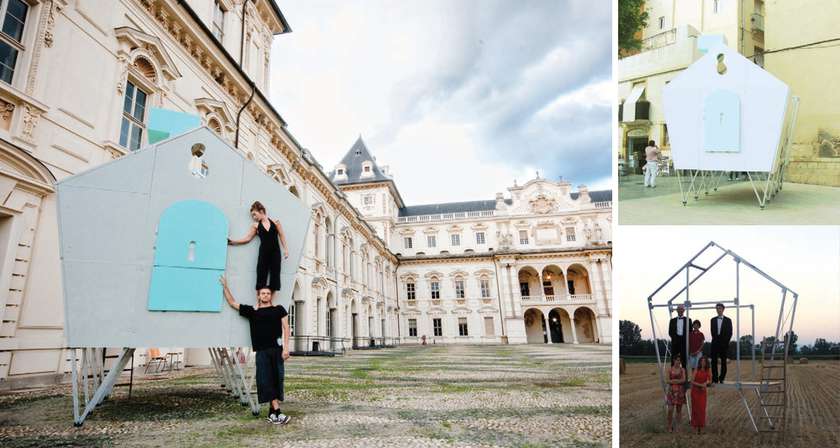
MARIE VON BLANCHE, 2011. Marie Von Blanche is a legendary woman that lived between Alsace and Lorrain in the 19th century. De to the political changes that occoured in that area she had to move a loro, carrying all her stuff with her. The dismountable house plays with architecture archetypes, it rememper a children house based on 9 alluminium feet. It travelled a lot, throught Italy and Spain.